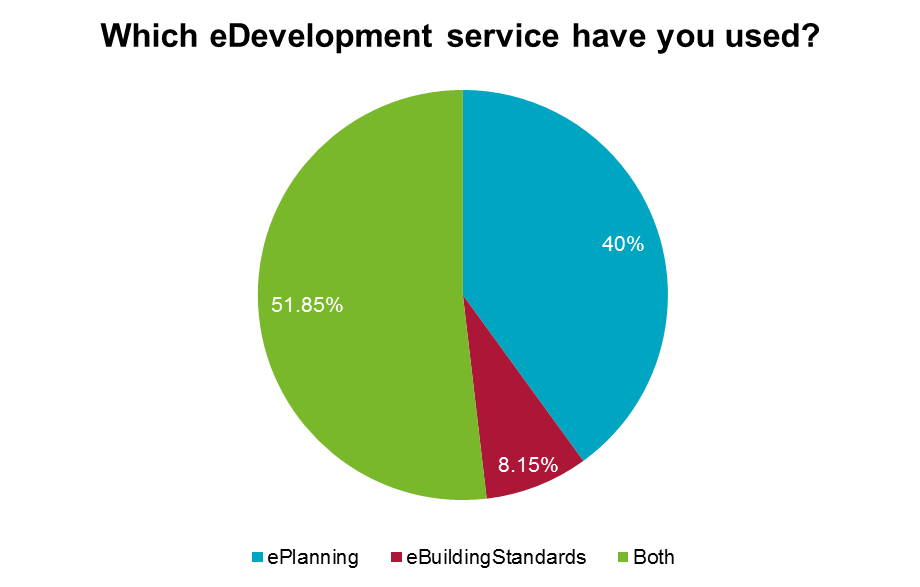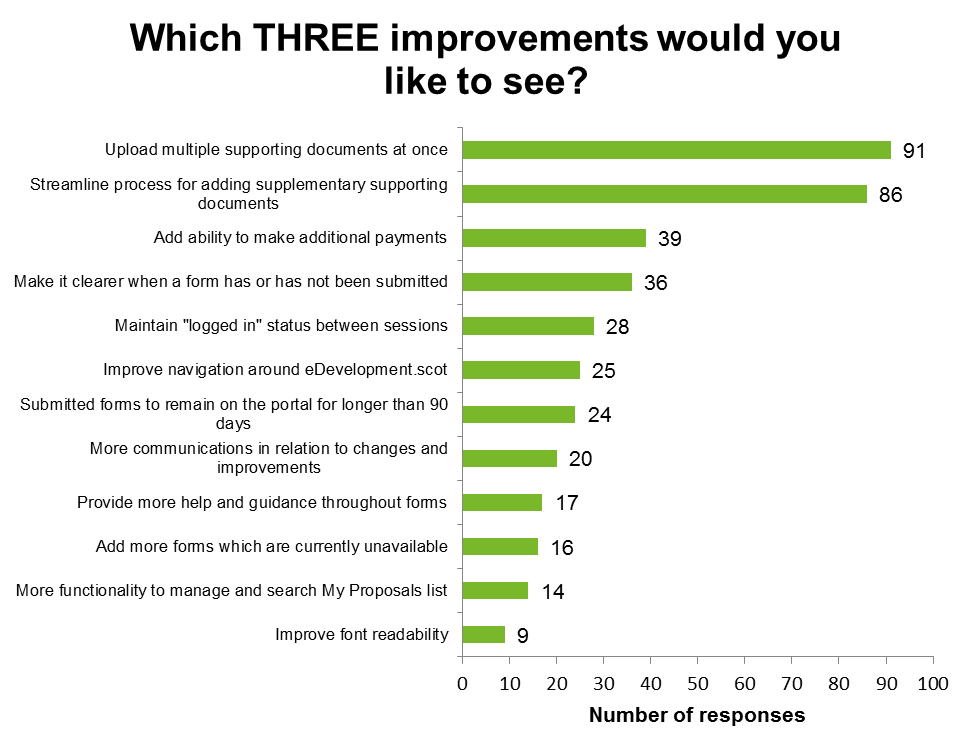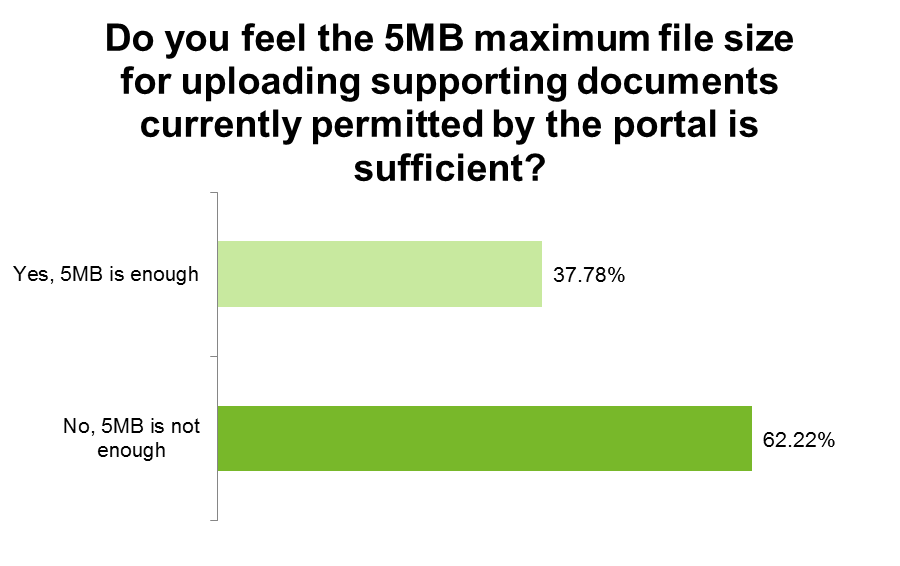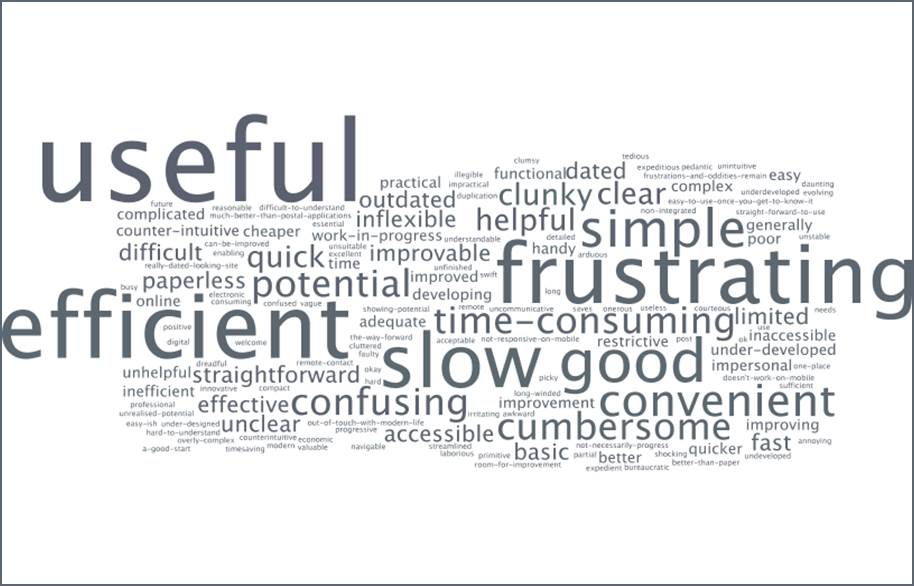Planning and Architecture
eDevelopment.scot – Survey for Users Analysis Report
November 29, 2017 by planningarchitecture No Comments | Category eDevelopment.scot, ePlanning
We conducted a survey aimed at the users of our service to obtain feedback on what improvements could be made to the eDevelopment service, and its ePlanning and eBuildingStandards portals. The survey ran over a 3 week period from the 16th October to the 6th November, with 135 users responding to a short series of questions based on previous feedback received from the support desk and stakeholder events.
It sought feedback from users on a wide range of issues, including asking for users’ views on improvements to the service they would like to see in the future. The survey highlighted key areas where we have performed well, but more importantly, also key areas where users feel that we need to improve. As shown in the analysis set out below, this feedback contained both positive and negative user experiences.
Thank you all for participating – this useful feedback will directly inform future updates and changes to the ePlanning and eBuildingStandards portals, and help us to improve the user experience of the eDevelopment.scot service.
Question 1: Service Usage

Just over half of users that responded to this question indicated that they have used both the ePlanning and the eBuildingStandards services, with a lesser proportion of respondents having used just the ePlanning service, and a much lower proportion of respondents using just the eBuildingStandards portal.
Question 2: Potential Improvements for 2018/19
The survey asked each respondent to nominate three possible improvements from a list of 12 that they would like to see being taken forward. This list was developed from feedback received from various sources; notably through discussions with planning and building authorities, the local authority survey, and from users contacting the eDevelopment Support Desk.
There were two improvements that were supported by the majority of respondents: being able to upload multiple supporting documents at once, and wanting to see a streamlined process for adding supplementary supporting documents.
Other popular improvements (in descending order) included having the ability to make additional payments through the service, providing a clearer indication when a form has or has not been submitted, maintaining “logged in” status to the eDevelopment service between sessions, and improved navigation for users around the eDevelopment portal, and the retention of submitted forms on the portal for longer than 90 days.
Question 3: Maximum File Size for Supporting Documents
The majority of respondents felt that the current 5MB limit for the size of a single file was insufficient, with some 62% of respondents indicating that this should be increased.
Question 4: Description of eDevelopment Services
Respondents were asked to describe the eDevelopment.scot service in three words. The words were analysed and allocated into three categories: positive, neutral and negative. Of these, there was an broadly even split between positive and negative words (around 37% of words used for each) with the remaining 26% of words described as neutral.
These included:
- Positive words – The most frequently submitted positive words used in the survey responses were ‘useful’, ‘efficient’, ‘paperless’, ‘quick’, ‘improving’, ‘good’, ‘easy-to-use’ and ‘convenient’. Others such as ‘accessible’, ‘clear’, ‘helpful’, ‘fast’ and ‘effective’, were used.
- Neutral words – The most frequently submitted neutral words used in the responses were ‘can-be-improved’, ‘potential’ and ‘okay’. Other neutral words to describe eDevelopment services included ‘adequate’, ‘developing’, ‘economic’, ‘necessary’ and ‘work-in-progress’.
- Negative words – The most frequently submitted negative words used were ‘frustrating’, ‘slow’, ‘outdated’, ‘confusing’, ‘time-consuming’, ‘cumbersome’ and ‘under-developed’. Others included ‘clunky’, ‘complex’, ‘counter-intuitive’, ‘difficult’ and ‘unclear’.
The words used by respondents are displayed in a wordcloud provided on the following page. Please note that the size of the word in the wordcloud reflects the frequency in which the words were used in the survey responses (i.e. big = more frequent, small = less frequent).
Question 5: Is there anything else you would like to mention to us?
87 respondents provided additional views on and/or suggestions for the service in responses to this question. In analysing these, just over half of respondents (46 responses) made suggestions that had already been recorded on our Service Improvement Log. A further 14 suggestions were added to the Service Improvement Log as a result of the survey.
14 respondents included feedback on the service and 16 set out a range of views on planning and/or building authorities’ processes and communications. Some of the responses given discussed wider issues relating to Digital Planning and Building Standards, and some also provided further detail on potential future developments for the service.
A broad summary of the comments and issues raised is set out below:
- Clearer information on the automatic response generated by the portals stating which form has actually been submitted.
- More pre-population of fields in forms that are unlikely to change.
- That regular users “test drive” any changes to the system.
- It would be handy to know what users need to have for an application prior to starting.
- That the service was so much better than having to print out three sets of documents and have them delivered to Council.
- This is a positive start and move in the right direction.
- That the user experience of the web service feels like an afterthought.
- More comms would be good, and that this survey and the new twitter page is a step in the right direction.
- The ability to track submissions through the portal rather than the individual authority’s site.
- There is too much text saying very little of use.
- Why am I downloading pdfs for a guide?
- The overall 100MB limit is “far from sufficient” for supporting documents.
- There has to be a function to upload multiple files at a time.
- Request for more information on payments.



